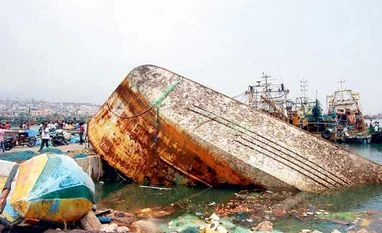Asia suffered the highest economic loss from natural catastrophes and manmade disasters, according to latest sigma study conducted by Swiss Re. The 'Natural catastrophes and man-made disasters in 2014' study said that Cyclone Hudhud, earthquake in China, monsoon floods in India and Pakistan led to loss of over 7,000 lives in Asia in 2014, with a total cost of disaster events estimated at $52 billion (Rs 3.23 lakh crore).
Globally, total economic losses from all disaster events were $110 billion (Rs 6.84 lakh crore) in 2014, where Asia contributed 47 per cent to the total global losses. Out of the total loss, only $5.2 billion (Rs 32,344 crore) worth of losses were insured in Asia.
The study said that there still lies a big protection gap with the lack of insurance cover in many countries in Asia. Economic development, population growth, a high concentration of assets in exposed areas and a changing climate are increasing the economic cost of natural disasters.
It said that these, if not accompanied by a commensurate increase in insurance penetration, will likely result in a widening protection gap over the long term.
In early September, monsoon rains in the northern state of Jammu and Kashmir in India and the neighbouring region in Pakistan resulted in the worst flooding in 60 years. At least 665 perished and over 200,000 houses were destroyed. However, the rural communities were hit harder as the floods came at harvest time for rice and apple crops, the livelihood of many farmers.
Together, the total losses in India and Pakistan were $5.9 billion (Rs 36,698 crore), and insured losses were at least $0.2 billion (Rs 1,244 crore). The total losses from the destruction of housing in India were at USD 4.4 billion (Rs 27,368 crore).
More From This Section
Cyclone Hudhud caused the largest loss from a tropical cyclone, said the study. The biggest storm of the Pacific and Indian Ocean season was Cyclone Hudhud in October. The storm brought heavy rains and flooding in neighbouring states also. With a population of 2 million, Visakhapatnam is the third largest city on India's east coast.
The total losses were estimated at $7 billion (Rs 43,540 crore), the largest of all natural catastrophes in the world in 2014. However, the insured losses were a fraction of the total at just $0.6 billion (Rs 3,732 crore). The cyclone claimed 68 lives but the number could have been much higher. Early warning and evacuation of up to 400,000 people ahead of the storm saved many lives.
However, the study said that the number of victims of disaster events in 2014 was one of the lowest recorded. Improvements in early warning systems and emergency preparedness meant fewer victims than otherwise may have been. Around 12,700 people lost their lives in all disaster events, down from as many as 27,000 in 2013, making it one of the lowest numbers ever recorded in a single year.
It said that progress in local prevention and mitigation measures to strengthen resilience will be a key variable in total victim numbers in the future, especially if climate change leads to more frequent natural catastrophe events.
)